Table of content
- Nutritional Powerhouse
- Texture and Flavor
- Environmental and Practical Benefits
- Taste and Texture Aversions
- Pesticide Residues
- Digestive Sensitivity
- Nutritional Studies
- Pesticide Concerns
- Allergies and Sensitivities
- If You Choose to Eat the Skin
- If You Prefer Peeling
- Myth 1: Guava Skin Is Indigestible
- Myth 2: Peeling Guava Removes All Nutrients
- Myth 3: All Guava Varieties Have Edible Skin
Introduction
Guava, a tropical fruit celebrated for its sweet-tart flavor and remarkable nutritional profile, has long been a subject of debate among food enthusiasts and health-conscious individuals alike. At the heart of this controversy lies a simple yet polarizing question: Should you peel guava before eating it? While some advocates swear by the crisp texture and concentrated nutrients of the skin, others argue that peeling enhances taste and digestibility. This article delves into the scientific, cultural, and culinary dimensions of this debate, offering a comprehensive guide to help you decide whether to embrace the skin or discard it.
Chapter 1: What Is Guava, and Why Does It Matter?
Before diving into the peeling controversy, it’s essential to understand what makes guava unique. Native to Central America, Mexico, and parts of South Asia, guava (Psidium guajava) is a round or pear-shaped fruit with green or yellow skin and pink, white, or red flesh. Its flavor profile ranges from floral and musky to tangy, depending on the variety. Guava is rich in vitamin C, dietary fiber, antioxidants like lycopene, and potassium, making it a superfood powerhouse.
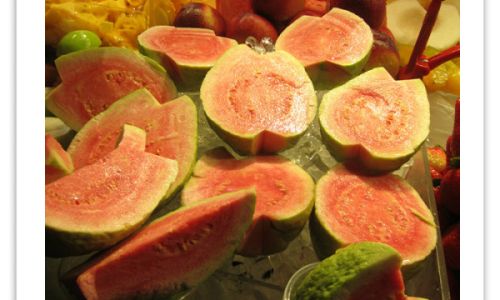
The fruit’s versatility extends beyond raw consumption—it’s used in jams, juices, desserts, and even savory dishes. However, its edible skin remains a point of contention. While the flesh is universally enjoyed, the skin’s fate hinges on personal preference, cultural practices, and practical considerations.
Chapter 2: The Case for Eating Guava with the Skin
Nutritional Powerhouse
Guava skin is a nutritional goldmine. Studies show that the peel contains higher concentrations of certain antioxidants, fiber, and vitamins compared to the flesh. For instance, the skin boasts up to 50% more vitamin C than the inner part, along with flavonoids like quercetin, which have anti-inflammatory and immune-boosting properties. The peel’s dietary fiber also aids digestion, promotes gut health, and helps regulate blood sugar levels.
Texture and Flavor
Advocates of eating guava with the skin argue that it adds a pleasant crunch and a subtle bitterness that balances the fruit’s sweetness. The skin’s texture varies by ripeness: underripe guavas have firmer, slightly gritty skin, while ripe ones offer a tender, edible layer. Some describe the taste as reminiscent of a pear or apple skin, enhancing the overall eating experience.
Environmental and Practical Benefits
Peeling guava generates waste, and discarding the skin contradicts the zero-waste movement gaining momentum globally. Eating the skin reduces food scraps and maximizes the fruit’s nutritional yield. Additionally, peeling can be time-consuming, especially when preparing multiple guavas for a recipe.
Chapter 3: The Case Against Eating Guava Skin
Taste and Texture Aversions
Detractors claim that guava skin can be tough, fibrous, or waxy, depending on the variety and ripeness. Some find its texture off-putting, comparing it to eating an unripe peach or a gritty apple. The skin’s bitterness may also overpower the flesh’s sweetness for certain palates.
Pesticide Residues
Conventionally grown guavas may carry pesticide residues on their skin, raising concerns about chemical consumption. While washing can reduce surface contaminants, it may not eliminate all traces. Organic guavas mitigate this risk but are less accessible or affordable for many consumers.
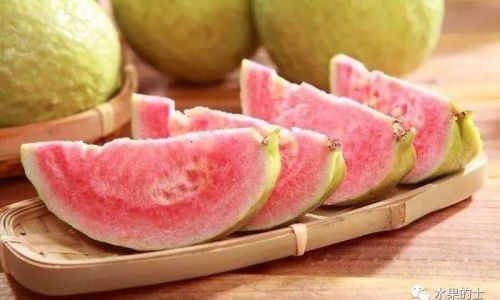
Digestive Sensitivity
Individuals with sensitive stomachs or irritable bowel syndrome (IBS) may experience bloating, gas, or discomfort after consuming guava skin due to its high fiber content. The peel’s tough fibers can also pose a choking hazard for young children or the elderly.
Chapter 4: Cultural Practices and Regional Preferences
Guava’s preparation varies widely across cultures, reflecting local traditions and culinary norms:
- Southeast Asia: In Thailand and Vietnam, guava is often sliced and served with a mixture of salt, sugar, and chili powder—skin intact. Street vendors sell it as a crunchy, tangy snack.
- Latin America: In Mexico and Colombia, guava is used to make ate, a thick jelly-like paste made from boiled fruit (including skin) and sugar. However, some recipes call for peeling to achieve a smoother texture.
- India: Guava is a popular street food, sold with a sprinkle of chaat masala. Vendors rarely peel it, as the skin is considered part of the experience.
- Africa: In countries like Kenya and Nigeria, guava is eaten raw with the skin, often paired with cassava or plantain.
These practices highlight that the decision to peel is deeply rooted in cultural heritage and accessibility.
Chapter 5: Scientific Insights into Guava Skin Safety
Nutritional Studies
A 2020 study published in the Journal of Food Science and Technology found that guava peel extracts exhibited potent antimicrobial and antioxidant activities, suggesting health benefits beyond basic nutrition. However, the same study noted that the peel’s high tannin content could interfere with nutrient absorption in some individuals.
Pesticide Concerns
The Environmental Working Group (EWG) lists guava as a low-pesticide fruit, meaning it’s less likely to harbor harmful residues compared to crops like strawberries or apples. Still, washing under running water and scrubbing gently with a brush can minimize risks.
Allergies and Sensitivities
While rare, guava skin allergies exist. Symptoms may include itching, swelling, or hives. If you experience adverse reactions, consult a healthcare provider and consider peeling the fruit.
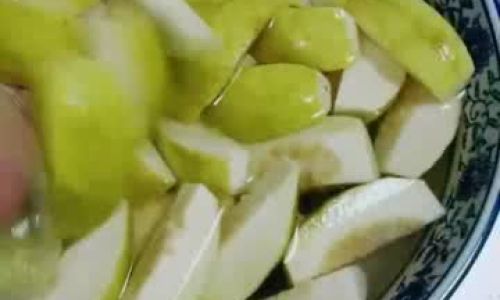
Chapter 6: How to Prepare Guava with or Without the Skin
If You Choose to Eat the Skin
- Select Ripe Guavas: Choose fruits with slightly soft skin and a fragrant aroma. Avoid those with bruises or mold.
- Wash Thoroughly: Rinse under cool water, using a vegetable brush to remove dirt or residues.
- Slice and Serve: Cut into wedges or slices, removing only the hard core and seeds if desired.
If You Prefer Peeling
- Blanching Method: Boil water, submerge guavas for 30 seconds, then transfer to an ice bath. The skin will loosen, making peeling easier.
- Knife or Peeler: Use a sharp knife or vegetable peeler to remove thin layers of skin, avoiding excessive waste.
- Creative Uses for Peels: Don’t discard the skin! Boil it to make guava tea, blend into smoothies, or use as a natural food dye.
Chapter 7: Debunking Myths About Guava Skin
Myth 1: Guava Skin Is Indigestible
While the skin contains insoluble fiber, which adds bulk to stool, it’s not inherently indigestible. Cooking or blending guava can break down fibers, making it gentler on the stomach.
Myth 2: Peeling Guava Removes All Nutrients
While the skin is nutrient-rich, the flesh still contains significant vitamins and minerals. Peeling doesn’t render the fruit nutritionally void but reduces its overall fiber and antioxidant content.
Myth 3: All Guava Varieties Have Edible Skin
Some hybrid or thick-skinned guava varieties (e.g., Psidium cattleianum, or strawberry guava) may have tougher, less palatable skins. Always test a small piece before committing to eating the skin.
Chapter 8: When to Peel and When to Keep the Skin
- Eat the Skin When:
- The guava is organic or thoroughly washed.
- You enjoy its texture and flavor.
- You aim to maximize fiber and nutrient intake.
- Peel the Skin When:
- The fruit is underripe or has a waxy texture.
- You’re serving it to children, the elderly, or those with digestive issues.
- You’re using guava in smoothies, jams, or baked goods where a smoother consistency is desired.
Chapter 9: The Verdict—A Matter of Choice
The decision to peel guava ultimately hinges on personal preference, cultural background, and health considerations. While the skin offers undeniable nutritional benefits, its texture and potential pesticide concerns warrant caution. Whether you’re a purist who relishes every bite of the skin or a pragmatist who prefers the flesh’s melt-in-your-mouth sweetness, guava remains a delicious and versatile fruit worthy of celebration.
Conclusion
The guava peeling debate is a testament to the fruit’s adaptability and the diversity of human palates. By weighing the nutritional, cultural, and practical factors outlined in this article, you can make an informed choice that aligns with your values and tastes. So the next time you encounter a guava, remember: there’s no right or wrong answer—only the joy of savoring a tropical treasure in the way that brings you the most pleasure.

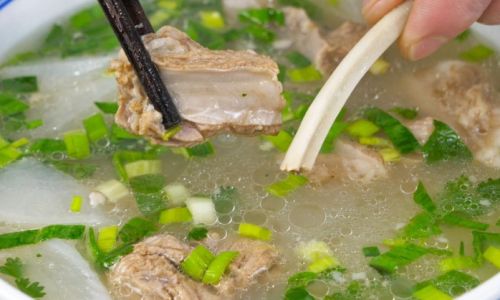



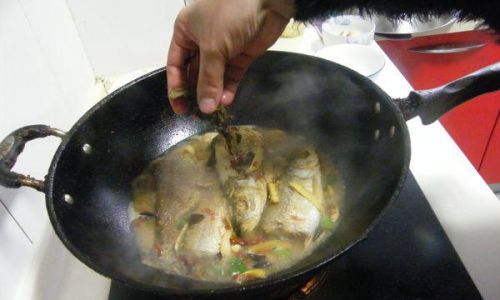
0 comments